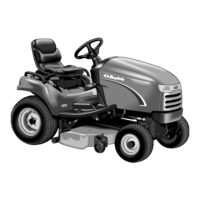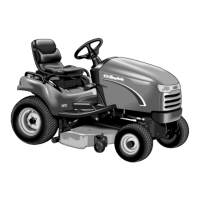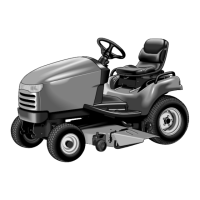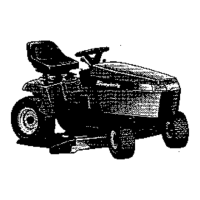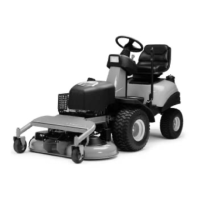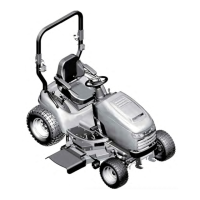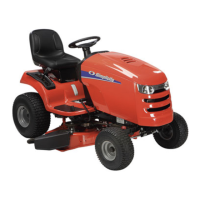1 - 7
1 General Information
Safety
Service and Maintenance
The service information provided in this manual is intend-
ed to provide you with the knowledge required to perform
a wide range of service procedures on the listed equip-
ment.
While appropriate safety reminders and safety warnings
have been included here and elsewhere in this manual,
you must also observe all appropriate shop safety rules
whenever performing these procedures.
No single manual, including this one, can include every
possible warning or safety instruction necessary to guar-
antee complete safety. You must apply common sense
and have knowledge of shop and power equipment safety
whenever performing service. This also applies whenev-
er working around others who are operating, servicing,
or handling equipment, and whenever you are in a work
environment where hand or power tools, shop equip-
ment, or outdoor power equipment may be present.
This includes taking the necessary safety precautions to
help ensure a safe workplace, exercising reasonable
care to avoid unsafe acts, and being alert for potential
hazards as you move about the workplace or engage in
various service activities.
If you encounter a service situation involving the use of
an unfamiliar tool, procedure, or part, and rereading the
appropriate section of this manual does not provide the
information you want, contact your Simplicity dealer
before proceeding. Never attempt a repair that you’re
not sure about, since help is usually never more than
just a phone call away.
Practicing safe service procedures not only helps to pro-
tect yourself and those you work around, it also con-
tributes to providing safe, reliable equipment.
PROPER TOOL USE
• Use power and hand tools only for the use that they
were designed. Never alter or modify tools, or impro-
vise using tools that are not suitable for the job at
hand.
• Keep all hand and power tools in good repair, and
put them away when done to avoid cluttering the
work area. Use extra care when using corded tools
around moving or rotating parts such as belts and
pulleys, since the cord could get caught and suddenly
pull the tool, or you, into the area of moving parts.
• Always check the unit to ensure that all hand and
power tools and tool attachments have been
removed from the unit after use. Small tools and tool
attachments left on the equipment can fall into the
cutting path when the unit is placed into service, and
become a hazard to bystanders if struck by the
mower blades.
PERSONAL PROTECTIVE EQUIPMENT
• Wear protective safety glasses or goggles whenever
using any hand or power tools, or shop equipment,
and whenever working with power equipment, to pro-
tect your eyes from flying or falling debris and small
parts.
• Wear safety goggles or full face protection when han-
dling battery electrolyte fluid, or when performing
grinding or sharpening operations that produce
sparks or flying debris. Extensive grinding may
require the use of protective sleeves and an apron.
• Wear work gloves when handling sharp surfaces such
as mower blades or when working around sharp
edges. Never wear gloves that are loose fitting or that
have tie straps – these could cause your hands to get
caught by rotating parts, resulting in serious injury.
Chemical-resistant rubber gloves are recommended
when handling or pouring battery electrolyte.
• Steel-toe safety shoes are highly recommended to
protect feet from falling tools, heavy parts, and other
shop equipment.
FUEL HANDLING
• Always use extra care when handling gasoline –
gasoline is highly flammable, and gasoline vapors are
highly explosive as well as toxic if inhaled.
• Never store fuel or refuel a unit indoors. Gasoline
vapors can easily travel undetected to distant sources
of ignition such as pilot lights or open flames on water
heaters, furnaces, stoves, or other gas-operated
appliances, and sparks from electric motors or other
electrically operated tools and equipment, welding
equipment, grinders, or burning smoking materials.
Contact with these or any other sources of ignition
will cause an explosion and/or fire, serious personal
injury, and damage to property and equipment.
• Hand- or power-operated transfer pumps can gener-
ate a static charge of electricity, causing dangerous
sparking and ignition of fuel or fuel vapors. Always
follow the pump manufacturer’s safety and operating
instructions.
• Use only approved containers for fuel, and always
handle the container with extreme care to avoid
spillage or leaking of the fuel and explosive vapors.
• Never smoke or allow others in the area to smoke
while refilling the fuel tank or when handling gasoline
cans. Make sure any smoking materials that had
been in use in the area are fully extinguished before
opening a fuel can or starting refueling.
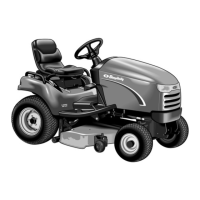
